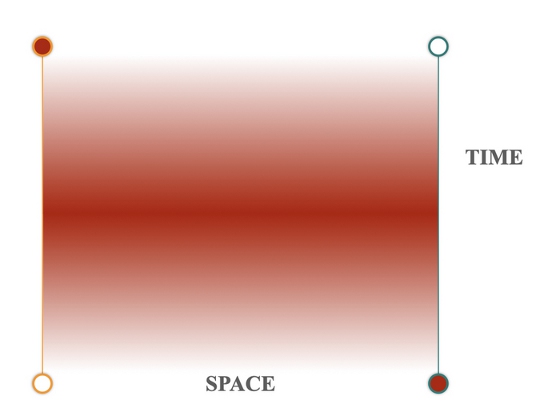 |
| March 21, 2023 | Volume 19 Issue 11 |
Designfax weekly eMagazine
Archives
Partners
Manufacturing Center
Product Spotlight
Modern Applications News
Metalworking Ideas For
Today's Job Shops
Tooling and Production
Strategies for large
metalworking plants
Weird science: Researchers aim to create world-first experimental wormhole
One of the first practical applications of the much-hyped but little-used quantum computing technology is now within reach, thanks to a unique approach that sidesteps the major problem of scaling up such prototypes.
The invention, by a University of Bristol (UK) physicist, who gave it the name "counterportation," provides the first-ever practical blueprint for creating a wormhole in the lab that verifiably bridges space, as a probe into the inner workings of the universe.
By deploying a novel computing scheme, revealed in the journal Quantum Science and Technology, which harnesses the basic laws of physics, a small object can be reconstituted across space without any particles crossing. Among other things, the experiment aims to provide a "smoking gun" for the existence of a physical reality underpinning our most accurate description of the world.

Study author Hatim Salih, Honorary Research Fellow at the university's Quantum Engineering Technology (QET) Labs, and co-founder of the start-up DotQuantum, said, "This is a milestone we have been working towards for a bunch of years. It provides a theoretical as well as practical framework for exploring afresh enduring puzzles about the universe, such as the true nature of spacetime."
The need for detectable information carriers traveling through when we communicate has been a deeply ingrained assumption among scientists, for instance a stream of photons crossing an optical fiber, or through the air, allowing people to read this text. Or, indeed, the myriad neural signals bouncing around the brain when doing so.
This holds true even for quantum teleportation, which, Star Trek aside, transfers complete information about a small object, allowing it to be reconstituted elsewhere, so it is indistinguishable in any meaningful way from the original, which disintegrates. The latter ensures a fundamental limit preventing perfect copying. Notably, the recent simulation of a wormhole on Google's Sycamore processor is essentially a teleportation experiment.
Hatim said, "Here's the sharp distinction. While counterportation achieves the end goal of teleportation, namely disembodied transport, it remarkably does so without any detectable information carriers traveling across."
Wormholes were popularized by the mega-hit movie "Interstellar," which included physicist and Nobel laureate Kip Thorne among its crew. But they first came to light about a century ago as quirky solutions to Einstein's gravity equation, as shortcuts in the fabric of spacetime. The defining task of a traversable wormhole, however, can be neatly abstracted as making space traversable disjunctly; in other words, in the absence of any journey across observable space outside the wormhole.
The pioneering research provides a way to carry this task out.
"If counterportation is to be realized, an entirely new type of quantum computer has to be built: an exchange-free one, where communicating parties exchange no particles," Hatim said.
"By contrast to large-scale quantum computers that promise remarkable speed-ups, which no one yet knows how to build, the promise of exchange-free quantum computers of even the smallest scale is to make seemingly impossible tasks -- such as counterportation -- possible, by incorporating space in a fundamental way alongside time."
Plans are now in progress, in collaboration with leading UK quantum experts in Bristol, Oxford, and York, to physically build this otherworldly sounding wormhole in the lab.
"The goal in the near future is to physically build such a wormwhole in the lab, which can then be used as a testbed for rival physical theories, even ones of quantum gravity," Hatim added.
"This work will be in the spirit of the multi-billion ventures that exist to witness new physical phenomena, like the Laser Interferometer Gravitational-Wave Observatory (LIGO) and the European Organization for Nuclear Research (CERN), but at a fraction of the resources. Our hope is to ultimately provide remote access to local wormholes for physicists, physics hobbyists, and enthusiasts to explore fundamental questions about the universe, including the existence of higher dimensions."
Tim Spiller, Professor of Quantum Information Technologies at the University of York and Director of the Quantum Communications Hub of the UK National Quantum Technologies Program said, "Quantum theory continues to inspire and astound us. Hatim's latest work on counterportation provides another example of this, with the added bonus of a pathway towards experimental demonstration."
John Rarity, Professor of Optical Communication Systems at the University of Bristol, added, "We experience a classical world which is actually built from quantum objects. The proposed experiment can reveal this underlying quantum nature showing that entirely separate quantum particles can be correlated without ever interacting. This correlation at a distance can then be used to transport quantum information (qbits) from one location to another without a particle having to traverse the space, creating what could be called a traversable wormhole."
Source: University of Bristol
Published March 2023
Rate this article
View our terms of use and privacy policy
